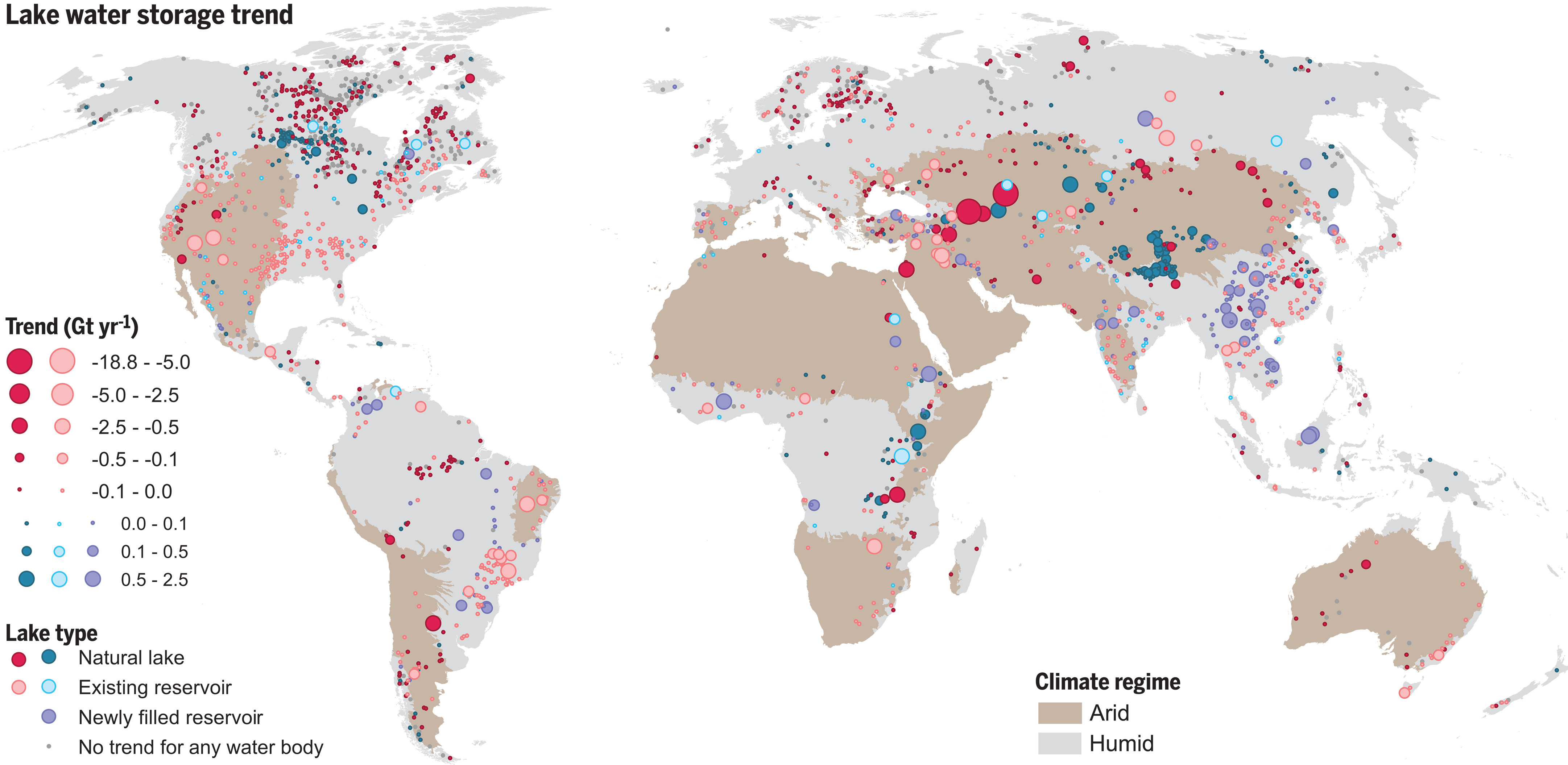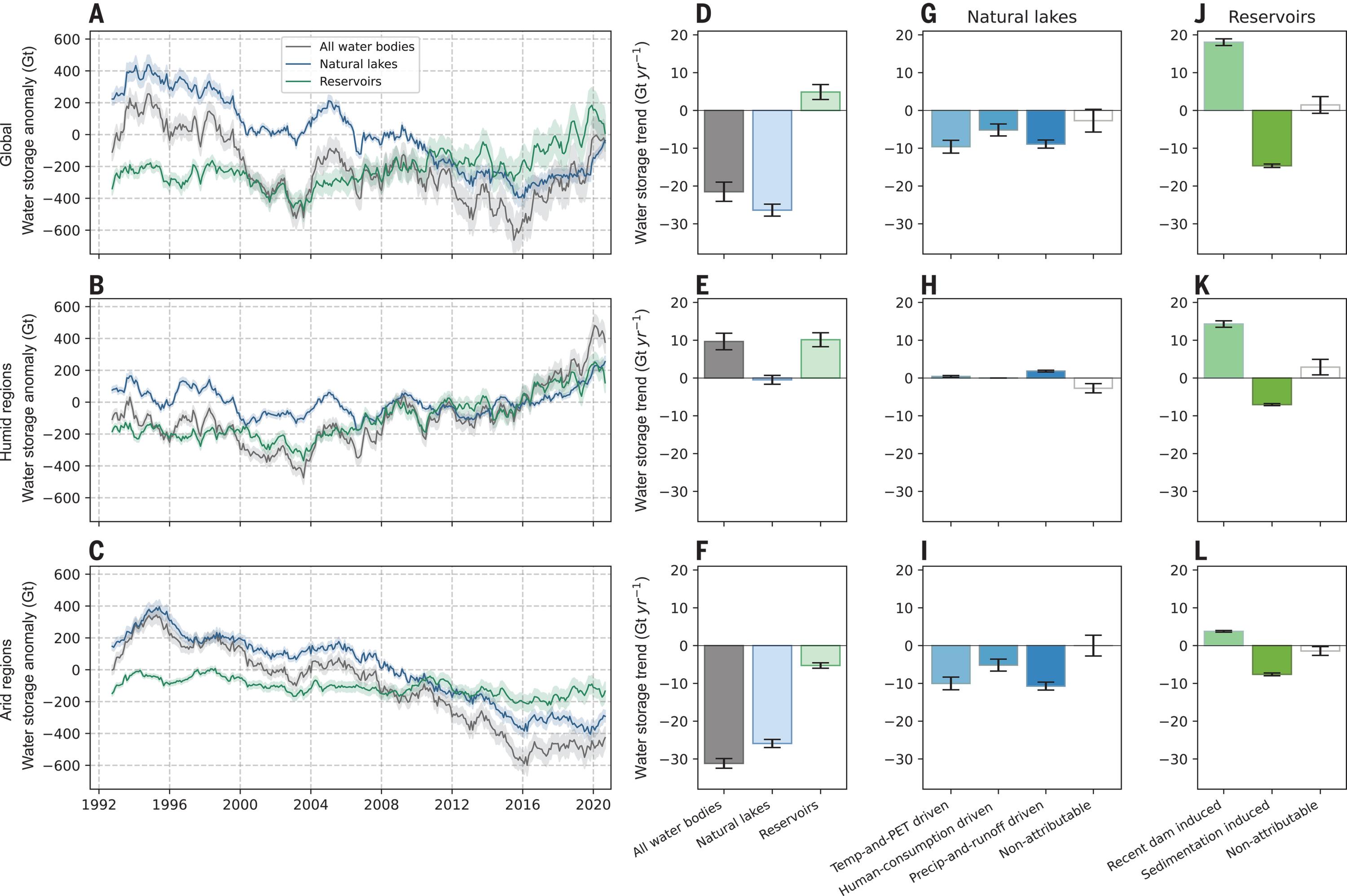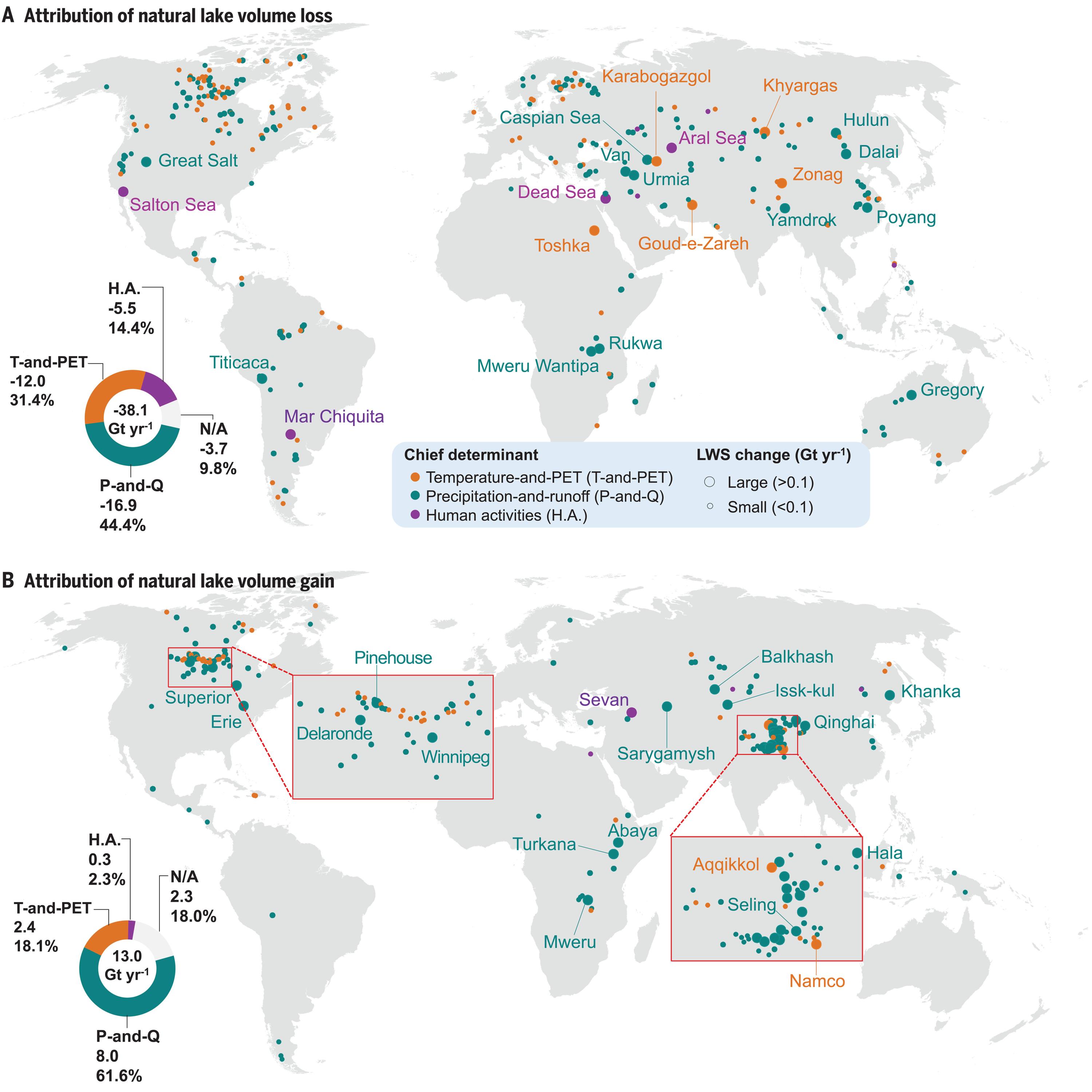文章来源:Fangfang Yao, Ben Livneh, Balaji Rajagopalan, Jida Wang, Jean-François Crétaux, Yoshihide Wada, Muriel Berge-Nguyen. (2023). Satellites reveal widespread decline in global lake water storage. Science: 380, 743-749. DOI:10.1126/science.abo2812.
整理人:徐嘉苗,2021级本科生
整理时间:2024年6月4日
Abstract:Climate change and human activities increasingly threaten lakes that store 87% of Earth’s liquid surface fresh water. Yet, recent trends and drivers of lake volume change remain largely unknown globally. Here, we analyze the 1972 largest global lakes using three decades of satellite observations, climate data, and hydrologic models, finding statistically significant storage declines for 53% of these water bodies over the period 1992–2020. The net volume loss in natural lakes is largely attributable to climate warming, increasing evaporative demand, and human water consumption, whereas sedimentation dominates storage losses in reservoirs. We estimate that roughly one-quarter of the world’s population resides in a basin of a drying lake, underscoring the necessity of incorporating climate change and sedimentation impacts into sustainable water resources management.
摘要:气候变化和人类活动日益威胁着储存地球表面87%液态淡水的湖泊。然而,全球湖泊体积变化的近期趋势及其驱动因素大多仍未知。在此,我们利用三十年的卫星观测、气候数据和水文模型,对全球1972个最大湖泊进行分析,发现1992至2020年间,这些水体中有53%的湖泊存储量呈统计学意义上的下降。天然湖泊净体积减少很大程度上归因于气候变暖、蒸发需求增加以及人类水资源消耗,而在水库中,沉积作用是存储损失的主要原因。我们估计,全球约有四分之一的人口居住在正在干涸的湖泊流域内,这凸显了将气候变化和沉积作用的影响纳入可持续水资源管理的必要性。

图 1992年10月至2020年9月,全球大型湖泊的蓄水量普遍下降

图 1992年10月至2020年9月全球湖泊储水量变化的时间序列和驱动因素

图 自然湖泊显著体积变化的归因
原文链接:https://www.science.org/doi/10.1126/science.abo2812
节选转引:https://mp.weixin.qq.com/s/dGWiDpf-P9UnIOq5GEdr6w